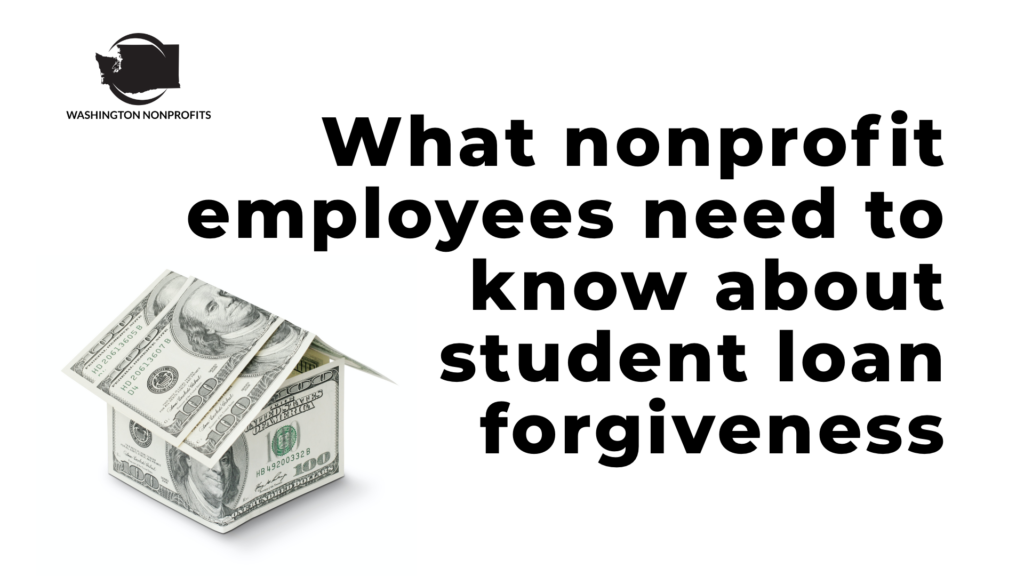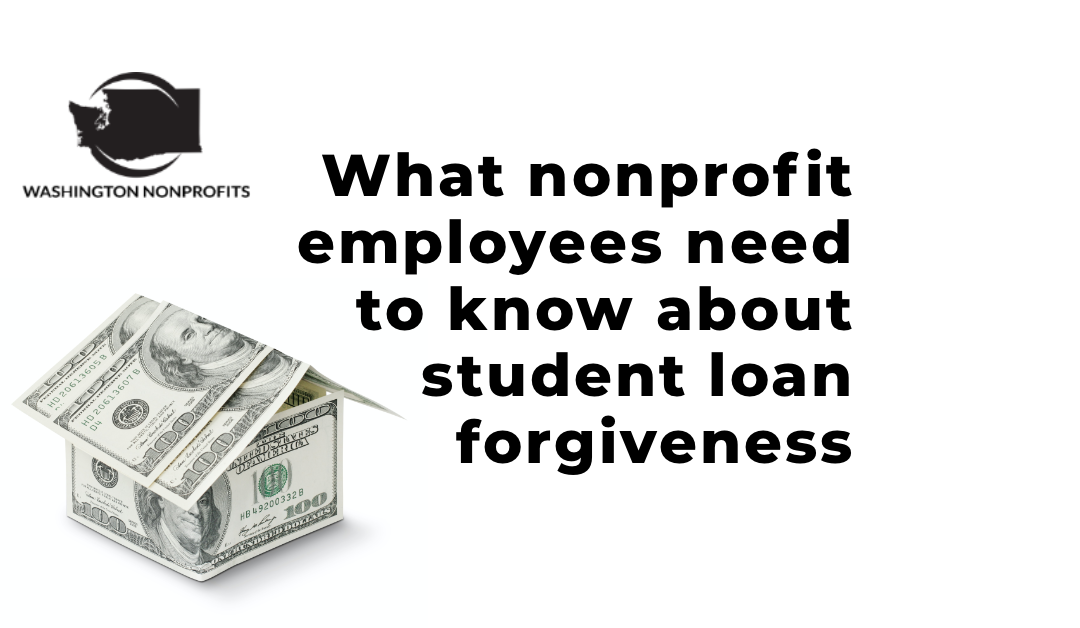What nonprofit employees need to know about loan forgiveness.

There are important changes to the Public Service Loan Forgiveness Program (PSLF) that may allow many more borrowers to receive forgiveness than in previous years. We recommend reviewing the temporary waiver to see if you are eligible for forgiveness or if you may become eligible by consolidating your loans.
PSLF has left many frustrated as the program has had an incredibly high rejection rate because borrowers misunderstand the unclear bureaucratic requirements. This led the Department of Education (ED) to issue the new waiver, announced in October 2021. The waiver is only available temporarily, however, and may require you to act prior to its conclusion on October 31, 2022.
Below is a summary of the program requirements and how the new waiver works.
A Review of Who May Qualify for Loan Forgiveness
The program is designed to allow for borrowers who work for the government or nonprofits to have their loan burdens reduced after 10 years of payments. To receive forgiveness of your student loans under PSLF, there were 4 key requirements:
- The right type of loan – The loans needed to be Federal Direct Loans. Other types of loans like Perkins loans or Federal Family Education Loans (FFEL) were not and are not eligible. But consolidation of these loans is an option. Parent Plus loans taken out to help children pay for college are also not eligible.
- The right type of repayment plan – You need to be in a monthly repayment plan.
- The right type of employment – Individuals need to be employed full time by an eligible 501(c)(3) employer or public employer. Unions and political organizations are not eligible employers. The ED does maintain a list of eligible employers, but it is not exhaustive. If you refer to that list and do not see your employer listed, you may still be eligible.
- The right number of payments – Borrowers need to make 120 qualifying payments (not necessarily consecutively) or 10 years of payments.
PSLF During COVID
The COVID-19 Pandemic had some major impacts on PSLF and on borrower’s payments on their loans. Many had their payments paused since March 2020-February 2022. If you received this pause, each month that was paused will still count towards the total 120 payments required for PSLF, even if no actual payment was made.
However, the other requirements were and are still in place.
The Temporary Waiver
Because the program has been complicated and difficult to navigate, in October 2021 the ED announced temporary changes to PSLF, temporarily waived some of the requirements listed above and provided a pathway for people to get back on track in the program. This short-term change ends October 31, 2022. Borrowers should act now to ensure you are and will remain eligible for the program. We recommend that you review a brief rundown of the specific changes from the Student Borrower Protection Center:
Steps You May Need to Take:
- Fill out a waiver before October 31, 2022. Don’t wait until the last minute and make sure you have completed the necessary steps.
- If you have FFEL or a Perkins loan, it must be consolidated into a Federal Direct Loan.
- You will need to certify with the Department of Education any period of working for a qualifying employer since October 1, 2007.
Resources
Webinar – Accessing Student Loan Forgiveness – National Council for Nonprofits
Accessing Public Student Loan Forgiveness – Student Borrower Protection Center
Federal Student Aid (FSA) Login Page – U.S. Department of Education
